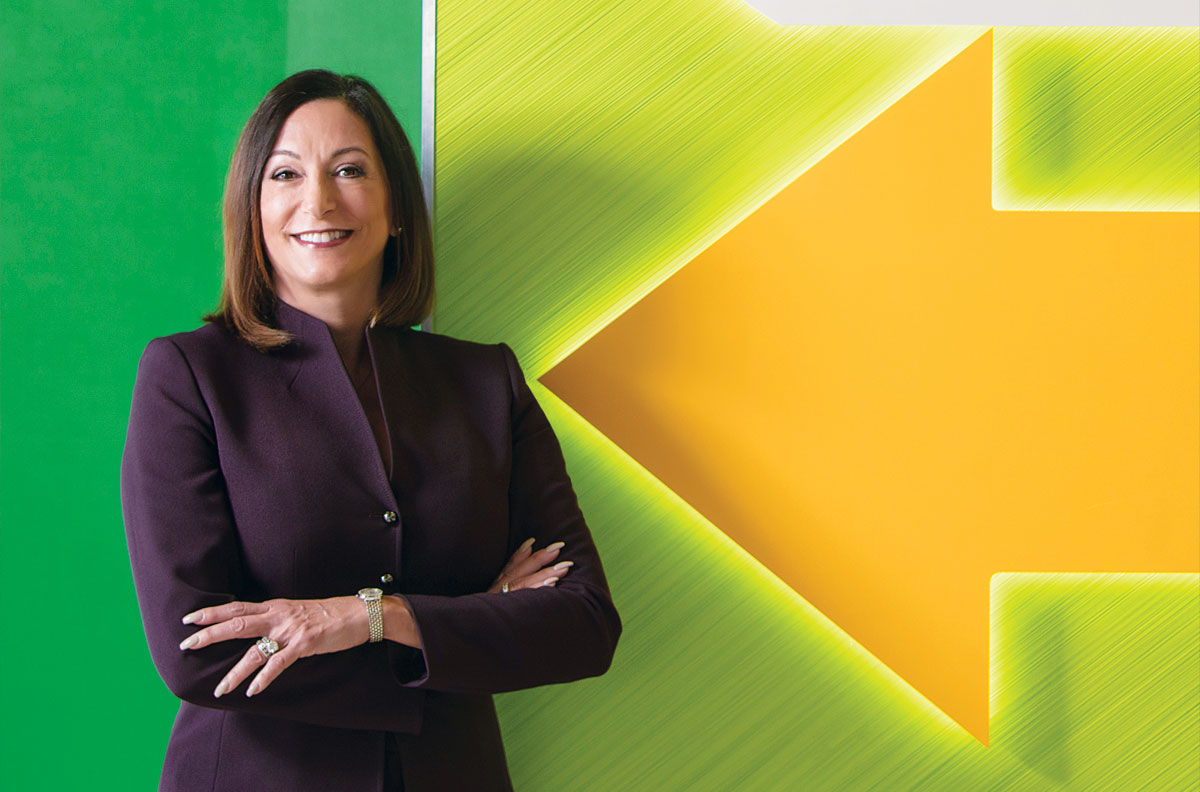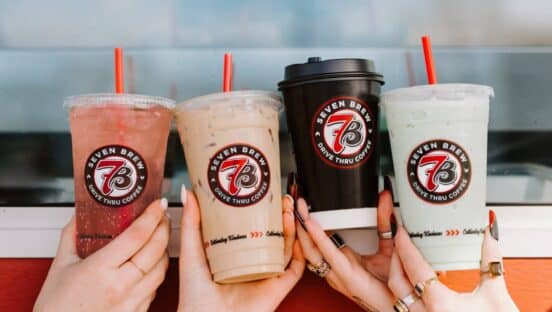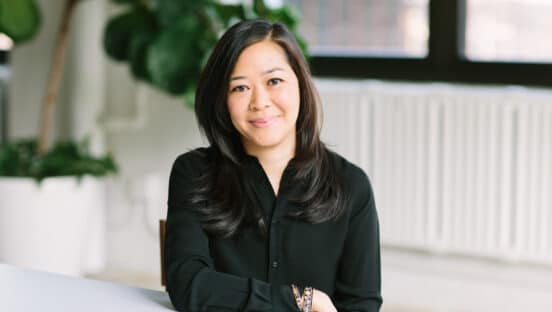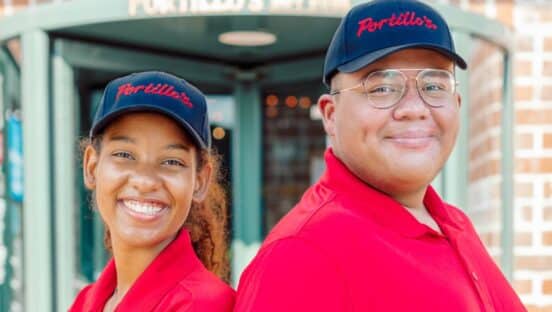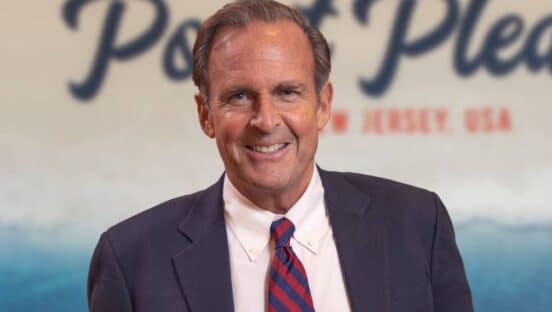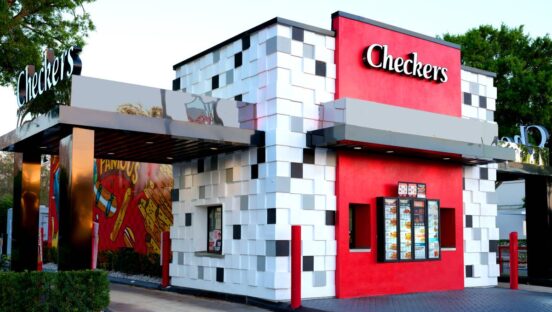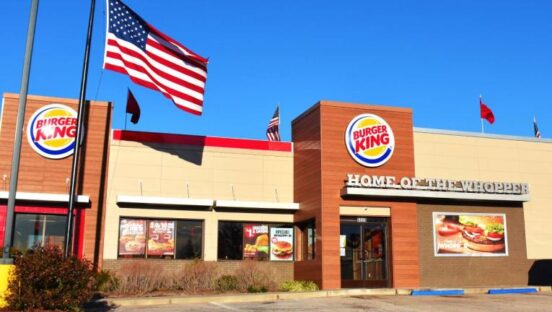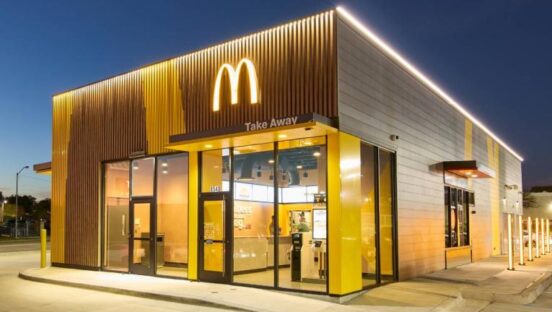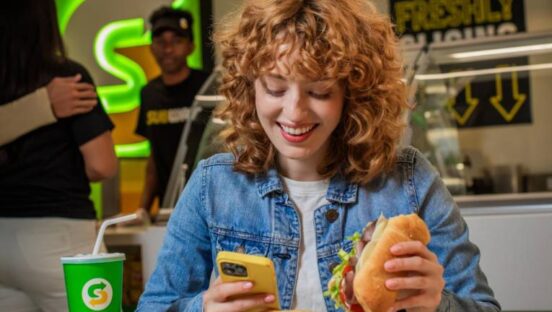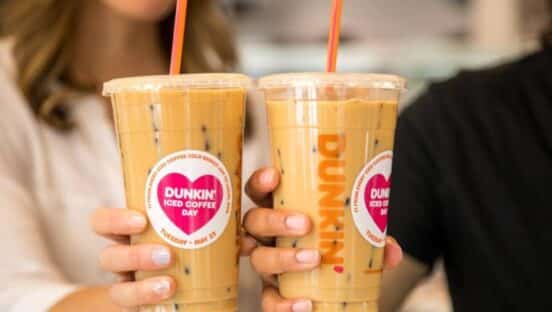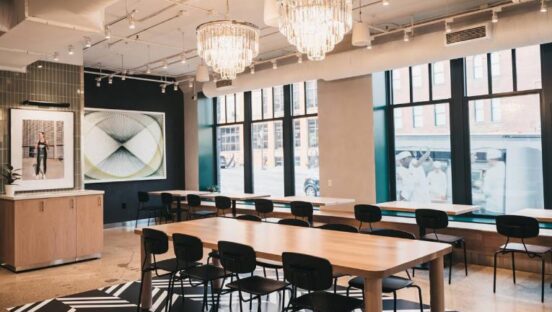There is a Subway in east Orlando, an endcap in a brand-new development just off state route 408. Of course, saying there’s a Subway in east Orlando is like saying there’s a millennial hipster in Brooklyn or an aspiring actor in L.A. There were nearly 27,000 Subways in the U.S. at the close of 2016, almost double the locations of the next largest chain (McDonald’s) and nearly one for every 12,000 people in the states.
But this particular Subway is not like those thousands of other Subways tucked into U.S. shopping plazas, airport food courts, freeway convenience stores, and university student centers. This Subway reflects the company’s new Fresh Forward design, one of 12 Subways around the country to have introduced the rebrand earlier this year.
Inside, early-morning sunlight pours through floor-to-ceiling windows that stretch the depth of the store, illuminating a space one would be forgiven for confusing with a salad fast casual. Lime- and shamrock-green walls pop from the opposite side of the store. Ordering kiosks—sleek white tablets—stand at the ready by the front door. On the wall next to the make line, two enormous arrows in Subway’s signature white and yellow wrap around each other in an “S” icon.
In the middle of all of this sits Suzanne Greco, president and CEO of the largest restaurant chain in the world. In one of her first interviews since becoming CEO in the fall of 2015, Greco met with us at the Orlando location to explain how Fresh Forward is positioning Subway to be more competitive for the future—and how it’s helping her carry on the legacy of her late brother, Subway founder Fred DeLuca.
Where freshness comes forward
The Fresh Forward design, which at press time had expanded to more than 40 U.S. locations and was quickly rolling out to many more, is the culmination of two years of work designing a new Subway customer experience. Greco says leaders at the 52-year-old, Milford, Connecticut–
based company left no stone unturned, examining every single customer touchpoint in an attempt to modernize and refresh the sandwich chain.
“How do we integrate all of those attributes that consumers are looking for today into all of the great things that Subway has given consumers for 50 years?” she says. “We’re still healthy, nutritious, fresh, affordable, delivering great sandwiches, but consumers are using more technology and their expectations have changed. They still want what we give, which is that nutritious, fresh, affordable product, but they want it in maybe a little different way.”
Technology indeed plays a big part in the Subway makeover, having become that “different way” that so many customers—millennials and younger in particular—are turning toward for their restaurant interactions. Not only are the kiosks being tested as an alternative option for those who don’t wish to dictate their orders to employees (a touch, Greco says, that the company is even considering for drive-thru locations), but also Subway’s app now allows for easy mobile ordering. The Fresh Forward design includes both a separate make line in the kitchen for remote orders and a holding shelf by the point of sale so customers can easily drop in and pick up their sandwiches.
The store design—developed with FRCH Design Worldwide, with brand identity help from Turner Duckworth New York—is much sleeker than previous Subway iterations. It includes a new seating package that features updated tables, chairs, and cushioned benches along walls; digital menuboards that bring the menu to life above the make line; the textured green wallpaper that Greco says lends the restaurants more energy; and charging ports next to select seating for those customers who want to sit and stay awhile.
Energy-efficient LED lighting has been added, hanging from the ceiling in industrial strips. The chips and snacks selection has been moved out from between the customer and the make line so that it now stands in the middle of the restaurant and helps guide the guest through the line. Even the sneeze guard has been contemporized, with a lower, more slender arc.
“When we worked on the design, it was about taking the attributes that Subway has [but] bringing the freshness forward,” Greco says. “How do we make the product basically the star of the show? That’s our stage, where people are ordering their food and making their food. How do we improve the consumer interaction with the brand as a whole?”
One of the core ways Subway made the product the star of the show was by designing a shelf behind the “sandwich artists” that holds vegetables that will later be sliced into sandwich ingredients. It’s a small touch, but one that Greco says has already made a huge impact on guests.
She recalls a story of her visit to the first Fresh Forward store in Knoxville, Tennessee. A customer there asked the sandwich artist behind the counter why there was a shelf of vegetables, and when the employee responded that they were going to be cut up for sandwiches, Greco says, the customer was shocked; he had no idea Subway sliced its own veggies.
“We took it for granted. We assumed customers knew we bake our bread every day, we cut our vegetables every day,” she says. “There are things we do every single day that they just don’t realize we do because we’re not bringing it forward.”
Perhaps the most “forward” element of the new design is the Choice Mark, Subway’s new logo that pairs white and yellow arrows—one pointing right, the other pointing left to signify choice—in an iconic “S” shape with a more subliminal “S” at the center of the arrows. The sizable, lighted-up mark graces the walls of the Fresh Forward stores, easily seen throughout the inside and even outside of the stores.
“We didn’t change our logo, so to speak. We modernized it,” Greco says. “This mark works great for the app. It’s a symbol. It’s tidy. It can be used in modern spaces of communication and the environments consumers are in. It’s an icon they’ll pick up.”
If all of these touches sound a lot like those found in fast-casual concepts—salad brands like Sweetgreen and Chopt, for example, popularized the vegetable shelf—that’s not by accident. Greco acknowledges that guests are flocking more toward fast casuals as they demand higher-quality foodservice experiences.
But here’s the rub: So many fast casuals have capitalized on business models that Subway instituted decades before. Just look at the build-your-own setup; while plenty cling to the “Chipotle of” phrase when describing the rise in customization, Subway has done it since day one. Same goes for the fresh ingredients that are prepared in-store. (Even the green color scheme is a Subway original, whereas reds and yellows dominated the quick-service world’s early days.)
Greco says Subway has always provided what fast casuals tout as a differentiator, just at a more affordable price point. But that wasn’t permission for the quick-serve giant to play it safe in this new fast-casual era, she adds.
“We’re not the only ones doing this. This is what customers are looking for: a fresh, clean environment,” she says of the rebrand. “So all of the big brands have to do this, because you have the new brands coming in with this more contemporary environment. We have to meet those needs.”
Lessons from Fred
Greco’s rise to the role of Subway CEO may be the ultimate tale of climbing the company ladder—although her ascension to the brand’s highest position was bittersweet.
Having literally grown up in the Subway system—DeLuca first opened Subway in 1965 when he was 17 and his little sister was 7—Greco formally became a sandwich artist in 1973. From there, she worked every position in the restaurant before joining the corporate ranks, where she spent decades heading Subway’s R&D division. Among her team’s greatest hits were the chain’s breakfast and toasted sub platforms, its “Fresh Fit” menu of low-fat sandwiches, and its extended line of seasoned breads and sauces. She also oversaw the creation of Subway’s Independent Purchasing Cooperatives, which manage the company’s product purchasing around the world.
Greco was named senior vice president and head of marketing in January 2015, then promoted to president in June of that year. Just three months later she took on the role of CEO when DeLuca died after a long battle with leukemia.
In describing the immeasurable imprint DeLuca left on Subway, Greco says her brother’s style was always to keep things as simple and efficient as possible for the sake of the franchisees; she says he had a knack for boiling important ideas down to their simplest forms and making them work in the restaurants.
“If it’s too complicated, you can’t deliver consistency. Our job is to deliver a great-tasting product every single time, and when you’re serving 7.5 million sandwiches a day, that is not an easy task,” she says. “If you’re too complicated, you can’t deliver that delicious, consistent product and that customer service every single time. You don’t grow to this size doing it poorly.”
Beyond his propensity for simplicity and efficiency, DeLuca was also known for dreaming big—really big. The founder regularly set growth goals for the company that might once have seemed impossible, but which Subway regularly achieved. (His last reported goal was 100,000 locations worldwide by 2030.)
Greco says that in 1982, back when Subway had just 200 restaurants, her brother predicted the company would have 5,000 restaurants by 1994. Subway beat the goal and then some; the company boasted 10,000 locations in 1994.
“When we set that goal, [DeLuca] had this vision, and we’re in this conference room and all of the development agents are there. He says it, and he thought he was going to get some great applause,” Greco says of the 5,000-location goal. “But he said to his wife, Liz, ‘Gee, these development agents aren’t clapping, why is that?’ And she says, ‘They think you’re crazy, Fred.’ So the joke was: Is Fred crazy? But no, he was a visionary.”
In growing up with a visionary such as DeLuca as her big brother, Greco says she learned how to work collaboratively with the company’s franchise partners to achieve monumental success. She also learned how a limitless, “don’t-let-anything-hold-you-back mentality” could lead to extraordinary results.
All lessons that are now coming to fruition with the Fresh Forward rebrand. “He built this amazing brand, and now I’m taking it to the next level,” she says. “And it’s really exciting.”
A new direction
The Fresh Forward design comes at a time when Subway perhaps needs it most. After years of triple-, even quadruple-digit net unit additions in the U.S., Subway suffered a blow in 2016, having reduced its domestic store count by 359 over 2015. Sales also fell, albeit by a comparatively slim $200 million over the year before (to $11.3 billion domestically).
Greco recognizes the increased competition that exists in the foodservice market today, but isn’t too worried about Subway’s trajectory, particularly in the saturated U.S. Globally, she says, there’s still plenty of room for new stores, but stateside the company is looking instead at ways it can reposition the brand in the neighborhoods where it already exists, whether that’s exploring new real estate opportunities or adapting to different customer behaviors.
“We can’t use the same strategies that we used before in some of the markets,” she says. “North America is a very important market for us, and our strategy here is to realign the market.”
Fresh Forward is one of its attempts at realigning. Whereas Subway initially viewed the concept of convenience and accessibility through the lens of store counts, Greco says, Fresh Forward rethinks that idea of accessibility with its digital-ordering platforms and its more comfortable in-store vibe.
Key to this new direction is franchisee buy-in, considering the fact that the company is 100 percent franchised and has more than 21,000 franchisees worldwide. Greco says the company worked extensively with its franchisee family on the Fresh Forward plans, leveraging a committee of franchisees who partnered with headquarters on the project and eventually became some of the first to incorporate the new design.
“This is very important that we get their feedback, and that they’re a part of this, because this has to work,” she says. “It’s a waste of time for us to sit there in Milford, Connecticut, with a group of executives who aren’t running restaurants imagining what it’s like to do this. If we don’t have franchisees involved with this process, it will not be successful.”
The Fresh Forward design is modular, so while elements like the new logo will be seen more immediately across the system through things like packaging and marketing, franchisees will be able to adapt other elements over time and according to their needs. Franchisees are typically on a seven-year remodel cycle, but the company instituted a remodel freeze through 2018 as Fresh Forward makes its way out into the system, ensuring that franchisees won’t needlessly incorporate an old design. The modular design also allows for easy retrofitting.
So far, the results have been encouraging; Greco says franchisees have been extremely proud of the Fresh Forward design and are eager to incorporate its signature elements into their stores. The innovative direction is one that makes Greco proud, too, as it fits perfectly not only into her longtime role with the company, but also her position as its chief executive for the future.
“I worked in R&D for many years. Part of who I am is about innovation and taking this tremendous business model and brand, and bringing it into the future and to that next level,” she says. “Customer needs are changing, and they’re changing quickly with technology. Everything is happening so fast now. But it’s exciting to me to be involved with making those changes. It’s very exhilarating for me to take this brand to the next level.”
The CEO turns once again to her brother to illustrate the path forward for Subway, quoting his mantra that became the title of his 2000 book, Start Small, Finish Big.
“You have to start small, keep it simple, stay focused, and finish big. It’s limitless as to what can be done,” Greco says. “That’s been the essence of the brand and the essence of the thought process. That’s part of our culture; it’s who we are. It’s something to always look back at and remember. That’s where we came from, and guess what? That’s where we’re going.”

